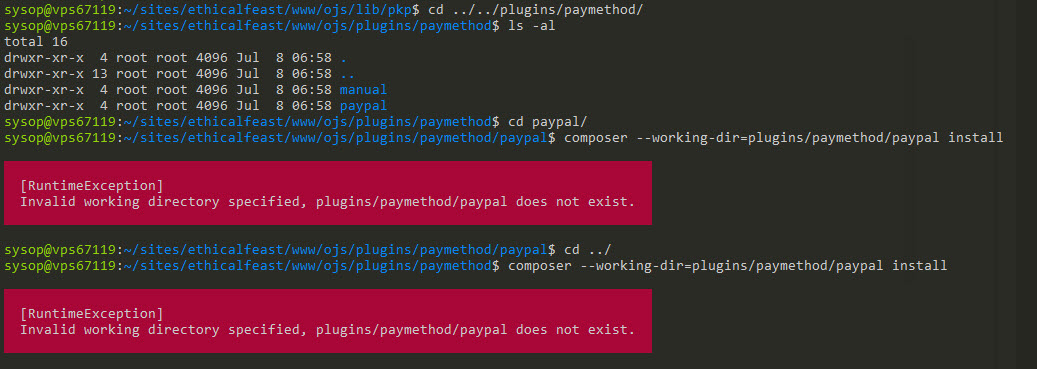Greetings,
Just following recipes in the documentation (I am not a sysadmin), and am running into trouble.
We are on a late-model Ubuntu server and I have ensured all packages are up to date.
Trying to run a composer installation today from GitHub - pkp/ojs: Open Journal Systems, so I guess we are on v3_3_1
Instructions:
composer --working-dir=lib/pkp install
composer --working-dir=plugins/paymethod/paypal install
composer --working-dir=plugins/generic/citationStyleLanguage install
First two commands run seamlessly…the third fails:
Your lock file does not contain a compatible set of packages. Please run composer update.
Problem 1
- seboettg/citeproc-php is locked to version v2.2.5 and an update of this package was not requested.
- seboettg/citeproc-php v2.2.5 requires ext-intl * -> it is missing from your system. Install or enable PHP's intl extension.
But how to run composer update? It doesn’t look like the ojs package is ready for this:
Composer could not find a composer.json file in /var/www/ethicalfeast/www/ojs
So let’s give NPM a try.
npm install goes well enough (noting some warnings that look typical) but
npm run build fails with:
> OJS3@3.3.0 build
> vue-cli-service build --no-clean
sh: 1: vue-cli-service: not found
I tried to install, uninstall, and update vue per clues here: vue.js - npm run server throws error sh: 1: vue-cli-service: not found - Stack Overflow
But still getting the service not found error.
Any clues or additional info that I could check on?
Thanks!
